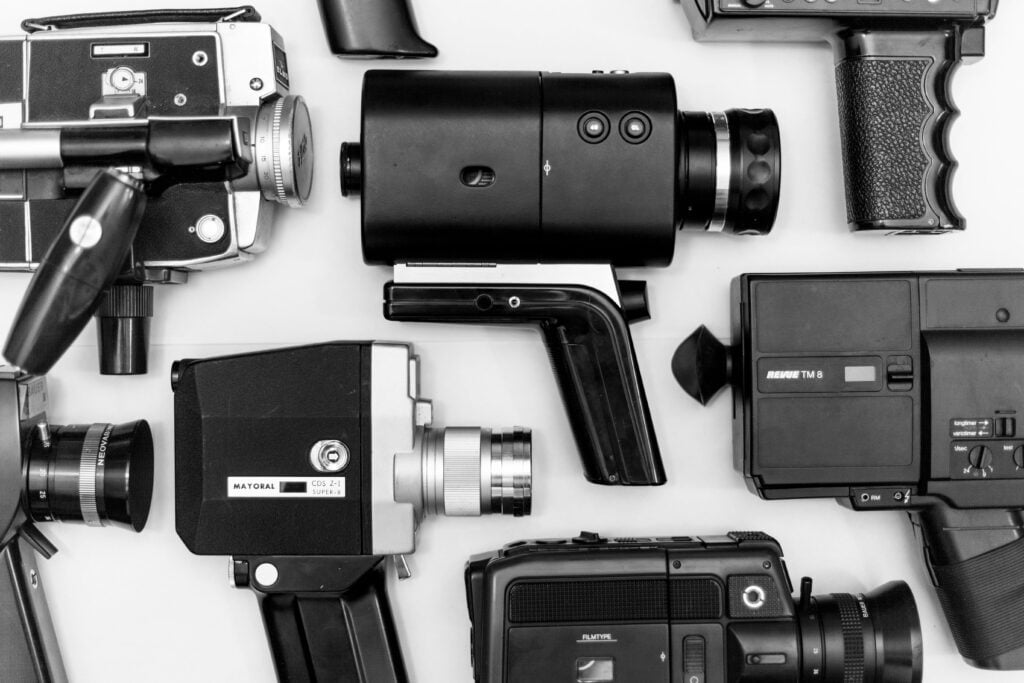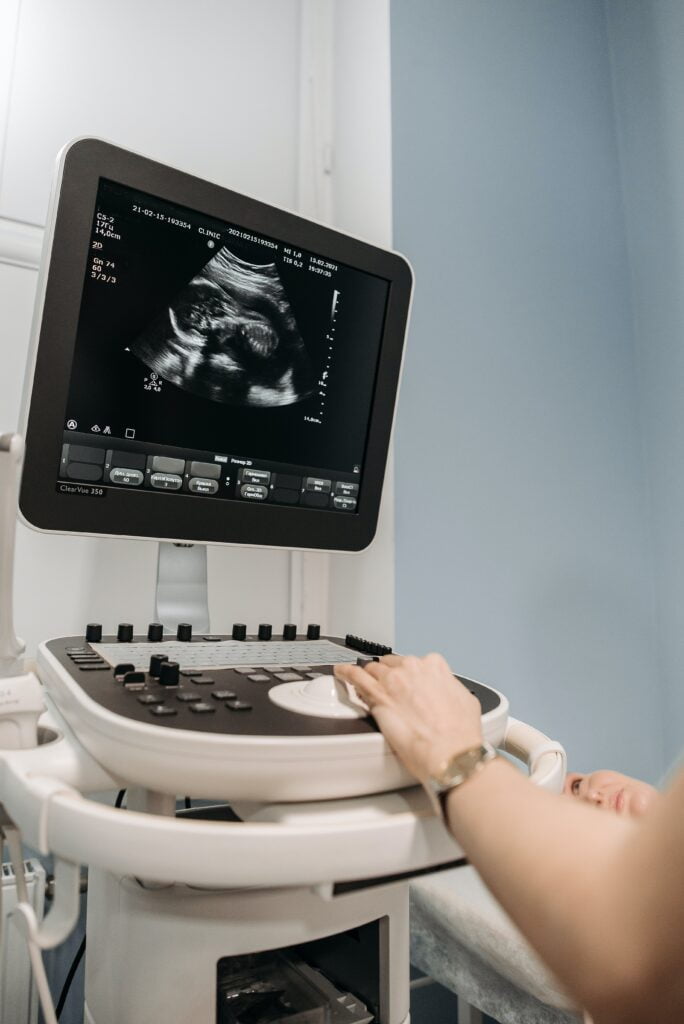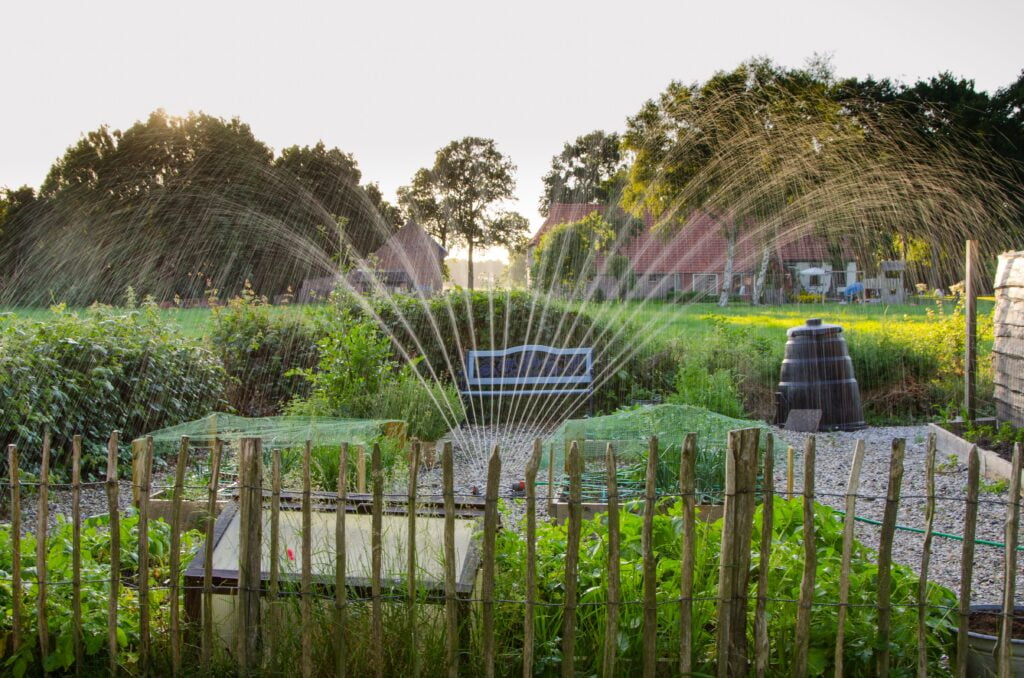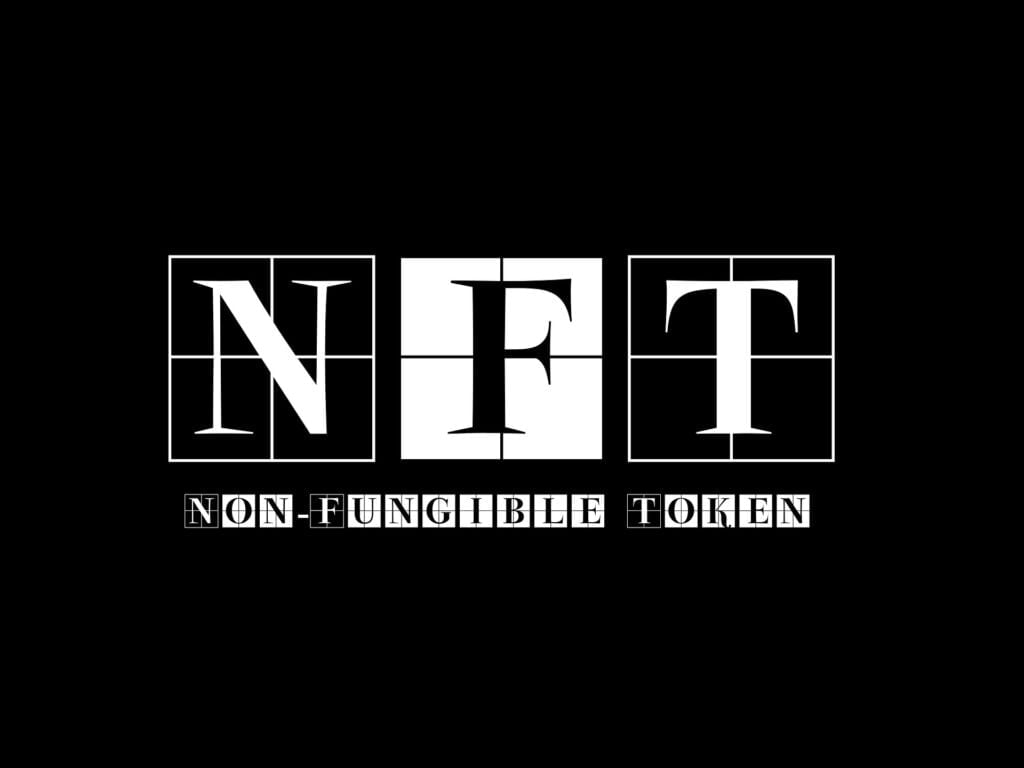“Dive into the future with our groundbreaking guide. Explore the hidden wonders of the Internet of Things (IoT) as we unveil 10 mind-blowing secrets that will revolutionize the way you see technology. Unleash the explosive power of IoT and embark on a journey that transcends the ordinary. Don’t miss out on the key to a smarter, more connected world. Get ready for a tech revelation like never before”
I. Introduction
A. Definition of Internet of Things (IoT)
The Internet of Things (IoT) is an expansive network that interconnects devices, allowing them to communicate and share data seamlessly. In this interconnected landscape, everyday objects become smart, enhancing our efficiency and transforming the way we interact with the world.
The Internet of Things (IoT) refers to the interconnected network of physical devices, vehicles, appliances, and other objects embedded with sensors, software, and connectivity, enabling them to collect and exchange data. IoT facilitates seamless communication and data sharing between devices, creating a smart and interconnected environment. These devices can range from everyday household items to industrial machinery, forming a vast ecosystem that enhances automation, efficiency, and real-time decision-making.
The integration of IoT enables users to monitor and control devices remotely, optimize resource utilization, and gain valuable insights through data analytics. While offering numerous benefits in areas such as healthcare, transportation, and smart homes, the proliferation of IoT also raises concerns about privacy, security, and the ethical implications of widespread data collection and connectivity.
You may also like: Unveiling the Power of Blockchain Technology: Changing Future
You may also like: 2024 Navigating the NFT Landscape : Unveiling the complexity of Non-Fungible Tokens
You may also like: Latest Advancements in Technology – AI (Artificial Intelligence), AR (Augmented Reality), & the IoT (Internet of Things)
You may also like: Augmented Reality (AR) Illuminating the Future of a Transformed World
B. Significance of Internet of Things (IoT) in the Modern World
In the contemporary era, IoT stands as a technological cornerstone, reshaping industries and daily life. The significance of the Internet of Things (IoT) in the modern world is profound, influencing diverse sectors and transforming the way we live and work. In healthcare, IoT facilitates remote patient monitoring, enhances treatment precision, and optimizes healthcare delivery. In agriculture, Internet of Things (IoT) sensors enable precision farming, ensuring efficient resource utilization and crop management.

Smart cities leverage Internet of Things (IoT) for improved infrastructure, traffic management, and energy efficiency, enhancing overall urban living. The industrial sector benefits from Internet of Things (IoT) through predictive maintenance, optimizing production processes, and ensuring equipment reliability. In the realm of consumer electronics, IoT devices like smart home systems provide convenience and energy efficiency.
Moreover, IoT fosters data-driven decision-making by collecting and analyzing vast amounts of information in real-time. This data-driven approach extends to businesses, where Internet of Things (IoT) enhances supply chain management, inventory tracking, and customer engagement. Despite its transformative potential, challenges such as security, interoperability, and privacy must be addressed to fully realize the positive impact of IoT in the modern world. Overall, the integration of IoT technologies holds the promise of creating a more connected, efficient, and intelligent global ecosystem.
II. Evolution of Internet of Things (IoT)
The evolution of the Internet of Things (IoT) traces back to the early 2000s, marked by the integration of sensors and connectivity into devices. Initially, IoT applications were focused on industrial settings, optimizing processes through machine-to-machine communication. As technology advanced, consumer-oriented Internet of Things (IoT) devices emerged, from smart home gadgets to wearable fitness trackers.
The proliferation of high-speed internet and the development of cloud computing further propelled IoT growth. Today, IoT has become integral to various sectors, enabling real-time data exchange, automation, and efficiency. With ongoing advancements in edge computing and 5G technology, the evolution of IoT continues, promising even more widespread connectivity and innovative applications.
A. Historical Background
The roots of IoT can be traced back to the early days of computer networking. The evolution has been marked by a relentless pursuit of connectivity, with each technological leap building upon the foundations laid by its predecessors.
The historical background of the Internet of Things (IoT) can be traced to the late 20th century when the concept of connecting devices to the internet emerged. The term “Internet of Things” was coined in 1999 by British entrepreneur Kevin Ashton. However, practical implementation gained momentum in the early 21st century with advancements in sensor technology and wireless communication.
The integration of IoT into various industries began, focusing initially on improving industrial processes. Over time, IoT evolved to encompass consumer applications, contributing to the interconnected landscape of smart homes, wearables, and diverse IoT-enabled devices that define the contemporary digital era.
B. Technological Advancements Driving IoT Growth
The growth of IoT is intricately tied to technological advancements. From the miniaturization of sensors to the advent of cloud computing, each milestone has propelled the expansion and adoption of Internet of Things (IoT) solutions.
Technological advancements are propelling the growth of the Internet of Things (IoT). The development of low-cost, high-performance sensors and the widespread availability of high-speed internet, including 5G networks, have significantly expanded IoT capabilities. Edge computing allows processing data closer to the source, enhancing real-time responsiveness.
Artificial intelligence and machine learning further empower IoT devices to analyze vast datasets, extracting meaningful insights. Additionally, the miniaturization of hardware components enables the integration of IoT into various industries, from healthcare to agriculture. Collectively, these advancements foster a dynamic IoT ecosystem, driving innovation and shaping the interconnected future of smart devices and systems.
III. Key Components of Internet of Things (IoT)
The Internet of Things (IoT) comprises several key components that work together to create a connected and intelligent ecosystem:
A. Sensors and Actuators
At the core of Internet of Things (IoT) are sensors and actuators. These components function as the eyes and hands of the interconnected system, collecting real-world data and executing actions based on that information.
Sensors and actuators are pivotal components in the Internet of Things (IoT) ecosystem. Sensors, ranging from temperature and motion detectors to more specialized devices, collect real-world data. They measure physical parameters and convert this information into digital signals. Actuators, on the other hand, respond to instructions by performing physical actions based on the processed data.
Together, sensors and actuators create a dynamic feedback loop, enabling Internet of Things (IoT) devices to sense their environment and react accordingly. This interaction is fundamental for applications across industries, from smart homes and wearables to industrial automation, enhancing efficiency, automation, and the overall intelligence of IoT systems.
B. Connectivity
Seamless connectivity is the backbone of IoT. Protocols like Wi-Fi and Bluetooth enable devices to communicate, creating a network that operates harmoniously to deliver a wealth of data.
Connectivity is a critical element in the functioning of the Internet of Things (IoT). It refers to the ability of IoT devices to communicate with each other and exchange data. Various connectivity technologies enable this communication, including Wi-Fi, Bluetooth, Zigbee, and cellular networks.
The choice of connectivity depends on factors such as range, data transfer speed, and power consumption. Seamless and reliable connectivity ensures that Internet of Things (IoT) devices can transmit data in real-time, facilitating remote monitoring, control, and the exchange of information. Robust connectivity forms the backbone of the interconnected network, enabling the efficient operation and coordination of diverse IoT applications.
C. Data Processing and Analytics
The sheer volume of data generated by IoT devices necessitates robust processing and analytics capabilities. This functionality turns raw data into actionable insights, empowering users to make informed decisions.
Data processing and analytics play a pivotal role in the Internet of Things (IoT) ecosystem. As IoT devices generate vast amounts of data, these components handle the organization, analysis, and extraction of meaningful insights. Advanced algorithms and computational tools process the collected data, uncovering patterns, trends, and anomalies. This valuable information enhances decision-making, enables predictive maintenance, and optimizes system performance across various sectors.
Additionally, edge computing brings processing closer to the data source, reducing latency and enhancing real-time responsiveness. The synergy of data processing and analytics empowers Internet of Things (IoT) applications to derive actionable intelligence, driving efficiency and innovation in diverse industries.
IV. Applications of Internet of Things (IoT)
A. Smart Homes
In the realm of smart homes, IoT has revolutionized how we interact with our living spaces. Smart thermostats, lighting systems, and connected appliances enhance comfort, convenience, and energy efficiency.
- Energy Efficiency: Automated temperature control optimizes energy consumption, reducing utility bills.
- Smart Lighting: Lighting systems adjust based on occupancy, promoting energy efficiency and convenience.
- Home Security: Connected cameras, motion sensors, and smart locks enhance security with remote monitoring and control.
- Appliance Management: Internet of Things (IoT) -enabled appliances allow for remote monitoring and energy conservation.
- Health Monitoring: Devices track vital signs, providing real-time data for healthcare professionals.
- Voice Control: Integration with voice assistants streamlines daily tasks, offering hands-free control.
- Convenience: Overall, Internet of Things (IoT) smart houses create interconnected ecosystems for improved comfort and seamless automation.
B. Industrial IoT (IIoT)
Industries have embraced IoT through the Industrial Internet of Things (IIoT). Predictive maintenance, real-time monitoring, and supply chain optimization are just a few areas where IIoT has made a substantial impact.
- Industrial Adoption: Industries have embraced Internet of Things (IoT) through IIoT for enhanced efficiency.
- Predictive Maintenance: IIoT enables predictive maintenance, reducing downtime and extending equipment lifespan.
- Real-Time Monitoring: Industries benefit from real-time monitoring of machinery and processes for quick decision-making.
- Supply Chain Optimization: IIoT plays a crucial role in optimizing supply chains, improving inventory management and logistics.
- Data-Driven Insights: IIoT generates valuable data for informed decision-making and process optimization.
- Operational Efficiency: Integration of IIoT enhances overall operational efficiency in industries.
- Cost Savings: IIoT implementations lead to cost savings through improved resource utilization and reduced downtime.

C. Healthcare & Internet of Things (IoT)
The healthcare sector benefits from IoT with innovations like remote patient monitoring, smart medical devices, and efficient drug management systems. These applications improve patient care and enhance operational efficiency.
- Remote Patient Monitoring: Healthcare Internet of Things (IoT) facilitates remote monitoring of patients’ vital signs, enabling timely intervention and reducing hospital visits.
- Wearable Devices: Internet of Things (IoT) in healthcare includes wearable devices that track and analyze health metrics, promoting preventive care and wellness.
- Smart Medical Devices: Integration of IoT enhances medical devices, such as smart insulin pumps or connected inhalers, for better disease management.
- Data Analytics: Healthcare Internet of Things (IoT) generates vast amounts of data, which can be analyzed to identify trends, improve treatments, and enhance patient outcomes.
- Hospital Asset Management: IoT enables tracking and management of medical equipment, optimizing their utilization and reducing the risk of loss.
- Patient Engagement: IoT fosters patient engagement through apps and devices, encouraging individuals to take an active role in managing their health.
- Telehealth Services: IoT facilitates telehealth, allowing remote consultations, diagnostics, and treatment planning, improving accessibility to healthcare services.
- Efficient Workflow: Implementation of Internet of Things (IoT) streamlines healthcare workflows, reducing administrative burdens and improving overall efficiency in healthcare delivery.

D. Agriculture & Internet of Things (IoT)
In agriculture, IoT introduces precision farming techniques. Smart irrigation systems, crop monitoring devices, and automated machinery contribute to increased productivity and sustainable farming practices.
- Precision Farming: Agriculture Internet of Things (IoT) enables precision farming techniques, optimizing resource use such as water, fertilizers, and pesticides based on real-time data.
- Smart Irrigation Systems: IoT in agriculture includes smart irrigation systems that adjust watering schedules based on weather forecasts and soil moisture levels, conserving water and enhancing crop yields.
- Crop Monitoring: Internet of Things (IoT) sensors provide real-time data on crop health, helping farmers detect diseases, pests, and nutrient deficiencies early for prompt intervention.
- Livestock Monitoring: Internet of Things (IoT) facilitates tracking the health and location of livestock, improving management practices and ensuring the well-being of animals.
- Automated Machinery: Internet of Things (IoT) enables the use of connected machinery and drones for tasks like planting, harvesting, and spraying, enhancing efficiency and reducing labor requirements.
- Weather Forecasting: Integration of weather data through IoT aids farmers in making informed decisions regarding planting, harvesting, and other agricultural activities.
- Supply Chain Optimization: IoT helps optimize the agricultural supply chain by providing data on crop yields, quality, and transportation logistics, improving overall efficiency.

V. Benefits and Challenges
A. Advantages of IoT
The advantages of IoT are multifaceted. Increased efficiency, improved decision-making, and enhanced user experiences are just a few of the benefits that permeate various sectors.
B. Security and Privacy Concerns
However, the interconnected nature of Internet of Things (IoT) raises legitimate concerns about data security and privacy. Safeguarding sensitive information and ensuring user privacy become paramount challenges.
C. Integration Challenges
The integration of diverse IoT devices poses challenges. Standardized protocols and interoperability solutions are crucial to ensuring seamless communication between devices from different manufacturers.
VI. Future Trends in Internet of Things (IoT)
A. Artificial Intelligence and Machine Learning Integration
The integration of AI and machine learning with IoT opens new frontiers. It promises more intelligent, adaptive, and autonomous systems capable of learning and evolving.
- Efficiency Improvement: IoT streamlines processes and automates tasks, enhancing overall operational efficiency in various domains.
- Cost Savings: Implementation of Internet of Things (IoT) technologies often leads to cost savings through better resource utilization, reduced energy consumption, and improved maintenance practices.
- Data Collection and Analysis: Internet of Things (IoT) generates vast amounts of data, allowing for detailed analysis to derive insights, optimize processes, and make informed decisions.
- Enhanced Productivity: Automation and real-time monitoring provided by IoT result in increased productivity across industries.
- Improved Decision-Making: Access to real-time data from IoT devices enables businesses to make more informed and timely decisions.
- Customer Experience: IoT contributes to the development of smart products and services, enhancing customer experiences through personalized and connected solutions.
- Safety and Security: In sectors like healthcare and industry, IoT enhances safety by enabling predictive maintenance, monitoring, and early detection of potential hazards.
- Environmental Impact: IoT can contribute to sustainability efforts by optimizing resource usage, reducing waste, and promoting eco-friendly practices in various sectors.
B. 5G and IoT Synergy
- The rollout of 5G networks is set to revolutionize IoT. The synergy between 5G and IoT will enhance data transfer speeds and reliability, unlocking new possibilities for connectivity. Increased Connectivity Speeds: 5G’s ultra-fast speeds provide low-latency connectivity, crucial for real-time communication and data transfer in IoT applications.
- Enhanced Capacity: 5G’s higher capacity accommodates the massive number of devices connected in Internet of Things (IoT) networks, supporting seamless connectivity in crowded environments.
- Low Latency: The low latency of 5G enables near-instantaneous communication between IoT devices, critical for applications requiring rapid response times, such as autonomous vehicles and remote surgeries.
- Massive Device Connectivity: 5G supports a significantly higher number of connected devices per square kilometer, facilitating the scalability of IoT deployments in smart cities and industrial settings.
- Improved Reliability: 5G’s reliability ensures consistent and stable connections, reducing downtime and enhancing the overall reliability of IoT applications.
- Energy Efficiency: The efficient use of energy in 5G networks contributes to the sustainability of IoT deployments, extending the battery life of connected devices and reducing environmental impact.
- Innovative Use Cases: The synergy between 5G and IoT enables the development of new and innovative use cases, fostering advancements in smart homes, healthcare, agriculture, and industrial automation.
C. Sustainability and IoT
Sustainability is emerging as a key theme in the future of IoT. Applications such as smart energy management and environmental monitoring showcase IoT’s potential to contribute to a more sustainable future.
IoT plays a pivotal role in promoting sustainability by optimizing resource utilization and reducing environmental impact. Smart sensors and connected devices enable efficient energy management in buildings, reducing consumption. In agriculture, IoT aids precision farming, minimizing water and pesticide usage.
Supply chain efficiency is improved through real-time monitoring, reducing waste and emissions. Additionally, IoT facilitates remote monitoring and predictive maintenance, prolonging the lifespan of equipment and minimizing electronic waste. The intersection of sustainability and IoT fosters environmentally conscious practices, making it a key driver in creating more eco-friendly and resilient systems across various sectors.
VII. IoT in Daily Life
the integration of IoT into daily life touches various aspects, providing automation, efficiency, and connectivity. From personalized wake-up experiences to efficient commuting, smart shopping, and sustainable farming practices, IoT has become an integral part of modern living, shaping a more connected and intelligent world.
- Morning Routine in a Smart Home:
- IoT-enabled smart thermostats adjust the temperature based on user preferences, ensuring a comfortable wake-up experience.
- Connected coffee makers can start brewing coffee automatically, syncing with the user’s wake-up time.
- Wearable Health Devices:
- Fitness trackers and smartwatches monitor metrics like steps taken, heart rate, and sleep patterns.
- Provide real-time data for users to track and optimize their health and fitness goals.
- Connected Commutes:
- IoT in connected cars offers real-time navigation, traffic updates, and suggestions for optimal routes.
- Predictive maintenance alerts ensure the vehicle’s health, reducing the risk of unexpected breakdowns.
- Voice-Activated Assistants:
- Smart speakers and virtual assistants respond to voice commands, performing tasks like setting reminders, answering queries, or playing music.
- Enable a hands-free and seamless interaction with technology throughout the day.
- Smart Retail Experiences:
- IoT-driven inventory management systems in stores ensure real-time tracking of product availability.
- Previous purchases enhance the shopping experience based on personalized recommendations.
- Location-Based Services:
- IoT-powered location tracking helps locate lost items, like keys or smartphones.
- Navigation systems provide real-time directions, traffic updates, and suggestions for nearby points of interest.
- Smart Agriculture Practices:
- Farmers use IoT-connected sensors to monitor crops and livestock remotely.
- Automated irrigation systems adjust water usage based on real-time data, promoting sustainable farming.
- Connected Appliances at Home:
- Smart refrigerators keep track of grocery inventory and send notifications when items need restocking.
- IoT-enabled kitchen appliances offer automation, such as adjusting cooking settings or preheating the oven remotely.
- Health Monitoring Beyond Wearables:
- IoT in healthcare includes remote patient monitoring devices that transmit real-time health data to healthcare providers.
- Enables timely interventions and reduces the need for frequent hospital visits.
- Energy Efficiency in Smart Homes:
- Smart thermostats and lighting systems optimize energy usage based on occupancy and user preferences.
- Contributing to energy efficiency and cost savings for homeowners.
- Security Through IoT:
- Home security systems with connected cameras and sensors allow remote monitoring.
- Smart locks can be controlled remotely, enhancing home security.
Entertainment and IoT:
- Smart TVs and streaming devices connect to the internet for access to a variety of content.
- IoT-enabled entertainment systems can be controlled through voice commands or mobile apps.
Efficient Waste Management:
- IoT-based waste management systems in smart cities optimize garbage collection routes based on fill levels in bins.
- Contributes to efficient waste disposal and reduced environmental impact.
Workplace Productivity with IoT:
- IoT in the workplace includes smart office environments with connected devices and sensors.
- Enhances productivity through efficient resource utilization and personalized workspaces.
Innovative Educational Tools:
- IoT applications in education include smart classrooms with connected devices for interactive learning.
- Students benefit from personalized learning experiences and access to educational resources.
VIII. Case Studies
A. Successful Implementations
Successful implementations of IoT have revolutionized various industries, enhancing efficiency, connectivity, and overall performance. In healthcare, remote patient monitoring using IoT devices ensures timely interventions and improved patient outcomes.
Smart cities utilize Internet of Things (IoT) for efficient waste management, traffic control, and energy conservation, contributing to sustainable urban living. Industrial sectors benefit from predictive maintenance, real-time monitoring, and supply chain optimization, leading to increased productivity and cost savings. Agriculture embraces precision farming through Internet of Things (IoT), optimizing resource usage and improving crop yields.
In smart homes, automated systems controlled by IoT devices enhance energy efficiency, security, and overall convenience. These implementations highlight IoT’s transformative impact across diverse sectors, creating more intelligent and interconnected ecosystems for a technologically advanced future.
B. Lessons Learned from Failures
Lessons from failures in Internet of Things (IoT) implementations underscore the importance of prioritizing security, standardization, careful planning, privacy considerations, and effective ecosystem management to ensure successful and resilient Internet of Things (IoT) deployments.
- Inadequate Security Protocols:
- Failures highlighted the vulnerability of IoT systems to cyber breaches, emphasizing the need for robust cybersecurity measures.
- Lack of Standardization:
- Insufficient standardization and interoperability hindered smooth integration among devices, emphasizing the necessity for industry-wide standards.
- Planning and Scalability Issues:
- Failures resulted from inadequate planning and scalability problems, underscoring the importance of thorough planning and future-proofing strategies.
- Privacy Concerns:
- Vast data generated by IoT raised privacy concerns, emphasizing the need for transparent data handling policies to address user privacy.
- Complex Ecosystem Management:
- The complexity of IoT ecosystems highlighted the necessity for ongoing monitoring and maintenance to ensure optimal performance.
IX. How to Implement Internet of Things (IoT)
A. Planning and Strategy
Successful implementation of IoT starts with meticulous planning and a clear strategy. Aligning IoT initiatives with organizational goals ensures a purposeful and effective integration.
B. Choosing the Right IoT Platform
Selecting the right IoT platform is crucial. Considerations such as scalability, security features, and compatibility with existing systems play a pivotal role in the success of IoT implementations.
C. Security Measures
Prioritizing cybersecurity is fundamental in Internet of Things (IoT) implementations. Robust security measures, including encryption, authentication, and regular updates, are imperative to safeguard against potential threats.
X. Impact on Businesses
A. Increased Efficiency
Businesses witness increased efficiency through IoT. Streamlined operations, predictive maintenance, and improved supply chain visibility contribute to heightened efficiency and competitiveness.
B. Cost Savings
IoT-driven efficiencies lead to tangible cost savings. From reduced maintenance costs to optimized energy consumption, businesses benefit financially from the implementation of Internet of Things (IoT) solutions.
C. Enhanced Customer Experience
IoT enhances customer experiences by personalizing services, providing real-time insights, and fostering innovation. Businesses that prioritize customer-centric IoT applications gain a competitive edge.
XI. Ethical Considerations
A. Responsible Use of IoT Data
Responsible handling of IoT data involves transparent practices and obtaining user consent. Ethical considerations ensure that data usage aligns with user expectations and privacy standards.
B. Addressing Ethical Dilemmas
Navigating ethical dilemmas in IoT requires a thoughtful approach. Balancing innovation with ethical considerations ensures that the benefits of IoT are realized without compromising on societal values.
XII. Regulatory Landscape
A. Data Protection Laws
Adherence to data protection laws is crucial in the Internet of Things (IoT) landscape. Regulations provide a framework for responsible data handling, safeguarding user information from misuse.
B. Compliance Challenges
Businesses face compliance challenges in navigating the complex regulatory landscape. Adhering to standards and regulations ensures that IoT practices align with legal and ethical considerations.
XIII. The Future of Internet of Things ( IoT)
A. Recap of Key Points
Summarizing the key advancements and challenges, the future of IoT holds exciting possibilities for innovation and integration. The relentless evolution of technology will continue to shape the trajectory of IoT.
B. Encouragement for Further Exploration
Encouraging ongoing exploration is essential in the dynamic realm of Internet of Things (IoT). Researchers, businesses, and enthusiasts are encouraged to delve deeper into the possibilities and challenges that lie ahead. The collaborative efforts of various stakeholders will undoubtedly contribute to the refinement and expansion of IoT applications, paving the way for a more interconnected and intelligent future.
C. How does 5g technology enhance the Internet of Things ( IoT)
5G technology significantly enhances the Internet of Things (IoT) by providing a robust foundation for unprecedented connectivity and performance. The key improvement lies in 5G’s remarkable speed and low latency, allowing for swift data exchange between IoT devices. This high-speed, low-latency network empowers real-time communication, enabling quicker response times for Internet of Things (IoT) applications.
Moreover, the increased capacity of 5G networks accommodates a vast number of connected devices simultaneously, fostering the growth of IoT ecosystems. The enhanced network efficiency of 5G not only supports the seamless functioning of existing Internet of Things (IoT)applications but also facilitates the development of new, more sophisticated ones. This transformative technology amplifies the potential of IoT across various sectors, from smart cities and healthcare to industrial automation, unlocking a new era of innovation and efficiency in the interconnected world.
XIV. Conclusion:
In conclusion, the evolution of the Internet of Things (IoT) has been an extraordinary odyssey, reshaping our technological landscape and revolutionizing our interaction with the world. Originating from the historical convergence of computing and connectivity, IoT has metamorphosed into a state of interconnected brilliance, weaving seamlessly into diverse facets of our daily existence.
The pillars of IoT—comprising sensors, connectivity, and data processing—unite to form the robust infrastructure that underpins its functionality. These elements harmoniously collaborate, establishing an expansive network of interconnected devices that facilitate information exchange and process automation. The applications of IoT transcend sectors, permeating realms such as healthcare, agriculture, smart homes, and industrial settings, showcasing its remarkable versatility.
The benefits bestowed by Internet of Things (IoT) are manifold, spanning from heightened efficiency and augmented convenience to the generation of data-driven insights. Yet, amid this transformative journey, challenges have emerged. Security apprehensions, privacy dilemmas, and the imperative for standardization persist as ongoing hurdles demanding vigilant attention and innovative solutions.
As we conclude this exploration of IoT, the resonating call for perpetual exploration and innovation becomes clear. The trajectory of IoT’s evolution points towards greater integration, intelligence, and societal impact. Peering into the future, promises of more profound advancements await, where the seamless connectivity of devices and intelligent data exchange become intrinsic to daily life.
Confronting the challenges and seizing the opportunities presented by Internet of Things (IoT)is imperative in shaping this future. The dynamic nature of IoT necessitates continual adaptation and innovative solutions to address security concerns, privacy issues, and interoperability complexities.
By collectively engaging with these challenges, we can pave the way for a future where connectivity and efficiency are not exceptions but ingrained aspects of our technological landscape. This transformative landscape holds the potential to enrich the way we live, work, and interact with the world across industries, promising a future brimming with possibilities.
Frequently Asked Questions:
Q1. How does IoT impact everyday life?
Q2. What are the key components of IoT?
Q3. What are the security challenges associated with IoT?
Q4. How is IoT transforming industries?
Q5.What role does IoT play in sustainability?
Q6.What does the future of IoT?
Q7.Does the Internet of Things pose any significant security risks?
Q8.How can companies maintain compliance with the constantly changing IoT regulatory environment?
Q9. Does IoT only apply to big businesses, or can small businesses also gain from it?
Q10.What role does IoT play in sustainability?

Pingback: Unveiling the Power of Blockchain Technology
Pingback: Sail to Success 6 Proven Strategies Cryptocurrency Exchanges
Pingback: Innovative Fashion Sketching Techniques: Redefining Canvas
Pingback: Fashion Design Internships with Mentorship Guarantee Success
Pingback: Positive Handling of Fashion Design Critiques:
Pingback: Time Governance Strategies Empowering Fashion Design Pract.
Pingback: Contemporary Fashion Design Trends Shaping Vibrant Future
Pingback: What is Uniform Civil Code A Revolutionary Change or A Myth
Pingback: Bharat Ratna India's Highest Civilian Honor
Pingback: Rudrapur: Escape the Ordinary & Experience 7 Unforgettable
Pingback: Exploring Haldwani: A Gateway to Himalayas
Pingback: Kainchi Dham Miracles Explored in 2024
Pingback: Kangen Alkaline Water Machine-Water Science Miracles 1
Pingback: Amazons GPT55X: Revolutionizing AI -Unmatched Capabilities
Pingback: qxefv-5-secret-ingredients-to-transform life
Pingback: FetLife Revolution Explore What When & How
Pingback: Fansly Unveiled The Ultimate Platform for Exclusive Content
Pingback: What is Amazons GPT44x and How Does It Work?
Pingback: Dizipal 554: The Future of Medicine
Pingback: AZE300X - A Revolution in Material Science
Pingback: Top 11 Websites to Watch Movies for Free Today: Unlock Unlim
Pingback: VC7774: What When and How to Use Fintech Technology
Pingback: Omgflix: Unbelievable Technology (2024)
Pingback: GPT66X AI: The Future of AI
Pingback: Why and How to Play Roblox now.gg: Enhance Your Gaming
Pingback: Understanding Trendzguruji me: What You Need to Know ?
Pingback: How Does Onlyfans Work for Viewers?
Pingback: FintechZoom: Revolutionizing Financial world in 2024
Pingback: BaddieHub A Journey to Fashion Beauty & Confidence
Pingback: The Impact of 4chan on Modern Internet Culture
Pingback: What is Indeed com and How Does Indeed Work for Job Seekers
Pingback: Flixtor Insights: Navigating Subscription Plans and Benefits
Pingback: Mastering the Amazon Refund Trick
Pingback: Exploring Streameast: Your Gateway to Online Streaming
Pingback: Divine Timing: Everything You Need to Know
Pingback: Shabari: A Tale of Devotion, Perseverance and Compassion
Pingback: Unified Viewing: Your Guide to All OTT in One App
Pingback: Discover TinyZone: Your Ultimate Guide to Free Online
Pingback: FintechZoom F Stock: Everything You Need to Know
Pingback: Stock Market FintechZoom: Top Trends to Watch in 2024
Pingback: Understanding Testing in Zillexit Software
Pingback: Sengol From Ancient Symbol to Modern Inspiration - A Journey
Pingback: 7 Powerful Insights into Pioneering Fashion Sketching
Pingback: Positive Client Communication in the World of Fashion Design
Pingback: Khatima's Unspoken Beauty: Discover 7 Breathtaking Secrets
Pingback: Guptkashi Unveiling the Sacred Gateway to the Himalayas
Pingback: How to Buy NFT in India Like a Pro: Unlocking the Secrets
Pingback: Best Coolers Under 15000